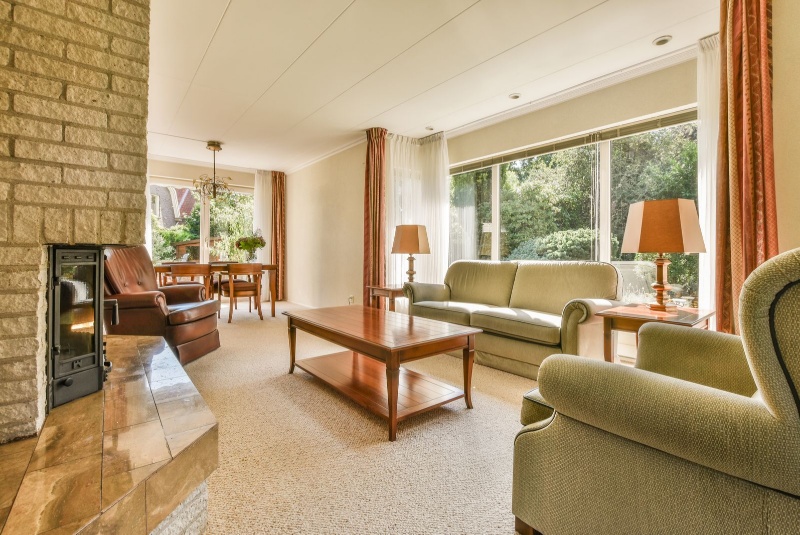Trash cans might not be the most glamorous part of home design, but they’re one of the most-used household items — and choosing the right one can make a surprising difference in your daily routine. Whether you’re outfitting your kitchen, bathroom, home office, or garage, the right trash can should balance function, capacity, and style.
With so many sizes, shapes, materials, and features on the market, finding the best trash can for your home can be more complex than it seems. This guide breaks down everything you need to know to make a smart, practical choice — from aesthetics and odor control to placement and capacity.
1. Identify the Right Size for Each Room
Trash cans come in a range of sizes, typically measured in gallons. The size you need depends on the room, how often you generate waste, and how frequently you're willing to empty the bin.
Recommended Sizes:
-
Kitchen: 12–16 gallons (larger households may prefer 20+ gallons)
-
Bathroom: 2–4 gallons
-
Bedroom or Office: 5–7 gallons
-
Garage or Utility Room: 20–32 gallons
Keep in mind: larger cans require less frequent emptying but may take up more floor space — especially in tight rooms.
2. Consider Material and Durability
Trash cans are made from a variety of materials, each with its own pros and cons. Choose based on the room’s needs, aesthetics, and how much wear and tear the bin will endure.
Common Materials:
-
Plastic: Lightweight, affordable, and easy to clean. Ideal for bedrooms, garages, or bathrooms.
-
Stainless Steel: Durable, modern-looking, and fingerprint-resistant. Best for kitchens and visible areas.
-
Wood or Wicker: Stylish for decorative purposes but not ideal for food waste or moisture-prone areas.
-
Recycled Materials: Eco-conscious and often available in sleek modern designs.
For high-traffic areas like kitchens, prioritize sturdy construction and ease of maintenance.
3. Choose the Right Shape and Placement
A trash can’s shape affects not just its aesthetics but also how well it fits into your space.
Shapes to Consider:
-
Rectangular or Square: Fits flush against walls or under counters; efficient for tight spaces.
-
Round: Works well in open areas or where aesthetics are a priority.
-
Slim or Narrow: Ideal for small kitchens, hallways, or tight corners.
Be sure to measure the intended space before purchasing to ensure a perfect fit, especially for under-cabinet or built-in placements.
4. Decide Between Open-Top, Swing Lid, or Step-On
The lid mechanism impacts hygiene, convenience, and odor control. Pick the right style based on how and where the trash can will be used.
Lid Types:
-
Step-On (Pedal): Hands-free, great for food prep and hygiene. Common in kitchens and bathrooms.
-
Swing-Top: Easy access but less odor control; best for offices or shared spaces.
-
Open-Top: Convenient in high-traffic areas but not ideal for smelly waste.
-
Touch-Top: Requires a quick press to open; sleek and easy to use.
-
Motion Sensor (Automatic): Touchless and high-tech, ideal for modern kitchens but requires batteries.
In areas like bathrooms or kitchens where cleanliness matters, step-on or motion-sensor models are ideal.
5. Focus on Odor Control Features
No one wants unpleasant odors lingering in their home. Some trash cans offer built-in features to help trap or neutralize smells.
Odor-Controlling Features:
-
Tight-Sealing Lids: Prevent odors from escaping.
-
Charcoal Filters: Neutralize smells for up to 3–6 months (often replaceable).
-
Separate Compartments: Keep organic or compostable waste separate to reduce odor build-up.
For kitchens, odor control should be a top consideration — especially if you cook frequently or dispose of food scraps often.
6. Explore Options With Built-In Liners or Bag Holders
A built-in liner or bag holder makes it easier to keep your trash can clean and change bags quickly. Some models even feature rings or compartments that hide the trash bag edge from view for a tidier appearance.
Benefits:
-
Prevents bag slippage
-
Hides messy bag edges
-
Speeds up bag changes
-
Keeps trash in place for better hygiene
Look for bins with internal liners or removable buckets for easy maintenance.
7. Consider Dual or Multi-Compartment Cans
If you’re committed to recycling or composting, a dual-compartment trash can helps you manage waste more efficiently — all in one footprint.
Dual-Use Designs:
-
Trash + Recycling
-
Trash + Compost
-
Recycling + Compost
These are especially helpful in small homes or apartments where space is limited. Just make sure both compartments are large enough to meet your household’s needs.
8. Match Style With Home Decor
Trash cans aren’t just functional — they’re also part of your home’s look. Especially in visible spaces like the kitchen or office, choose a style that matches your interior design.
Design Considerations:
-
Stainless steel for modern kitchens
-
Matte black for minimalist spaces
-
Soft pastel or white for Scandinavian aesthetics
-
Textured or woven designs for boho or farmhouse styles
You can even find custom bins with wood accents, decorative patterns, or sleek handles to blend seamlessly into your space.
9. Evaluate Ease of Cleaning
No matter the style, a trash can should be easy to clean — especially in spaces prone to spills or food waste.
Features That Help:
-
Removable liners or buckets
-
Smooth, nonporous surfaces
-
Fingerprint-resistant finishes
-
Dishwasher-safe lids or inserts
Avoid designs with too many seams or crevices, which can trap grime and bacteria over time.
10. Don’t Forget Special Features
Some trash cans come with additional features that boost convenience and functionality — particularly helpful in busy homes or multi-user spaces.
Extras to Look For:
-
Child-proof locks: Prevents accidents and keeps pets out.
-
Wheels: Makes it easier to move large bins, especially in utility rooms or garages.
-
Soft-close lids: Prevents slamming, extends lid life, and reduces noise.
-
Voice control or app-connected models: For smart home integration.
While not essential, these features can make daily use smoother and more satisfying.




